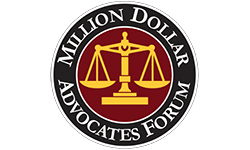Baltimore Personal Injury Lawyers
An Extraordinary Team of Personal Injury Heavyweights With Proven Successes Both Inside and Outside the Courtroom!
When your family is met with disaster and you or a loved one becomes injured through no fault of their own, you may not know where to turn. If the injury was the result of an unexpected accident, you might be in a situation where you’re struggling to pay for your medical bills and are being treated unfairly by insurance adjusters at the same time. The Baltimore personal injury lawyers at Belsky & Horowitz, LLC are on your side and ready to step inside the ring and fight on your behalf.
Our legal team knows how to handle tough opponents both inside and outside of the courtroom. We won’t hesitate to go up against the toughest insurance agencies in Maryland or a major corporation that’s responsible for your injuries. We believe in fighting for the underdog—for families like yours that may feel tossed to the curb by agencies and organizations that sometimes prioritize their pocketbooks more than anything or anyone else.
When we made the decision to focus on personal injury claims, our trial lawyers knew that more than anything, we wanted to help accident victims gain the ability to seek an easier recovery and have a voice against opponents they may not otherwise be able to take on. Injury cases are often the most difficult of claims to succeed with in the legal industry, but we take immense pride in every case we represent clients for. This pride is visible in every victory we accomplish.
A Baltimore Personal Injury Firm with Your Needs in Mind
As a personal injury law firm that was born and bred in Baltimore, we’re familiar with what it takes to win a civil lawsuit against a local company or group of insurers. We understand Maryland laws and the loopholes some insurers try and use to undercut injury victims from compensation they’re entitled to. We make it our goal to deliver justice where it’s due—in the most honest, impactful way possible—one that returns power to the hands of our clients.
Whether you were injured in a car accident, truck accident, or suffered after a nurse or doctor committed medical malpractice, we have your back during your time of need. Our personal injury attorneys have the experience your case deserves and requires, and we know how to get you the answers your family seeks. It’s natural to be desperate for answers following a tragic incident—answers as to why the accident occurred and how the duties of responsibility correspond with those answers. We’re here to help you receive those answers as well as the ability to find closure.
In addition to personal injury cases, our lawyers help Baltimore residents with legal malpractice cases and complex workers’ compensation claims. We understand why most workers’ comp claims are denied in Maryland and are happy to work with you to make the most out of your claim. Our goal is to maximize your corresponding chances of success and let you continue to provide for your loved ones.
Experience the Difference a Team of Winning Lawyers Makes
At Belsky & Horowitz, LLC, our injury lawyers all have proven track records of success and are local and nationwide leaders in our chosen areas of practice. If you’d like to know what we can potentially do to help you and your family, we encourage you to get in touch with us today. We offer zero-obligation consultations at no cost and will offer honest legal advice without any hurdles.
There’s a time to fight against major corporations, groups, insurers, and individuals that have committed harm to another. When we hold parties responsible for their wrongful actions, we establish a system of accountability that protects our loved ones from getting injured in the same way. Belsky & Horowitz, LLC believes in fighting. So should you.






